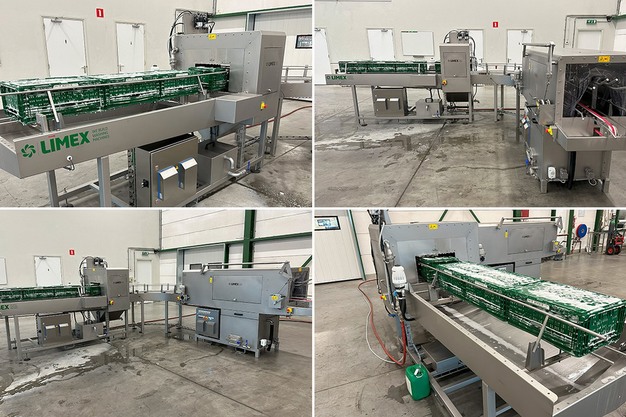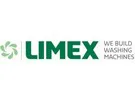Using foam means a longer contact time between dirt and disinfectant; it doesn't drip off quickly or dry up too fast. These are the main advantages of foam over liquid disinfection, which are what modern horticultural companies, and more specifically plant growers, are typically interested in.
It is, however, something relatively new. The Dutch company Limex, a big industrial cleaning machine player for all possible load carriers, launched the first foam modules in 2017. These machines constantly reused the foam, which sounded good but also had disadvantages. They recently delivered the first machine that applies fresh foam each time without being wasteful. "We call it Precision Foaming," begins Bart Bovee, a Limex technician and sales representative.

"It's a whole new concept which we can move forward with. The machines contain foam modules, in which compressed air converts disinfectant into foam. Before, we'd catch the foam dripping off, say, the crates or seed trays and would return it to the machine. The downside is that, when reused, the foam loses its strength and adhesion."
"The new generation of foam units always applies fresh foam and has minimal dripping. Very little excess foam is collected. It's stored separately so it can later be used for something else like disinfecting mats or cleaning other greenhouse materials or surfaces," says Bart.
Fresh foam's advantage is that it disinfects equally powerfully throughout the day. A control system ensures that foaming only occurs when products are in the foam tunnel. If that is empty, no foam is sprayed or, thus, used.
In principle, you can use a variety of agents, but in practice, it is almost always the German-manufactured Menno Florades. According to Bart, German seedling nurseries, in particular, swear by this, especially since it is one of the few substances that can be used in organic cultivation. The manufacturer claims the product leaves no residue, and depending on the crop, sowing can be done right after disinfection, or they advise waiting for a certain period.
The foam module is usually placed behind the cleaning module. So, first, the dirt is removed, then water is blown off, and only then does disinfection occur. "The surface must be as clean and dry as possible because then the foam adheres best. Then you can guarantee a long contact time."
"That's something a good application of Menno Florades also requires. We recommend not placing the cleaned product in a draft or outside in the sun after applying the foam; it dries too quickly. And to prevent birds from sitting on it, as happened to a customer once. Funny, but then you must start all over," Bart concludes.
Limex has already placed 20 to 30 cleaning machines with foam modules on the market. Their clients are located throughout Western Europe, focusing on Germany and seedling growers and in the Netherlands on seed breeders. They have also had interest from abroad and hope to deliver the first units in Mexico soon.
For more information:  Limex Machine Exploitation B.V.
Limex Machine Exploitation B.V.
[email protected]
https://www.limex.nl/
